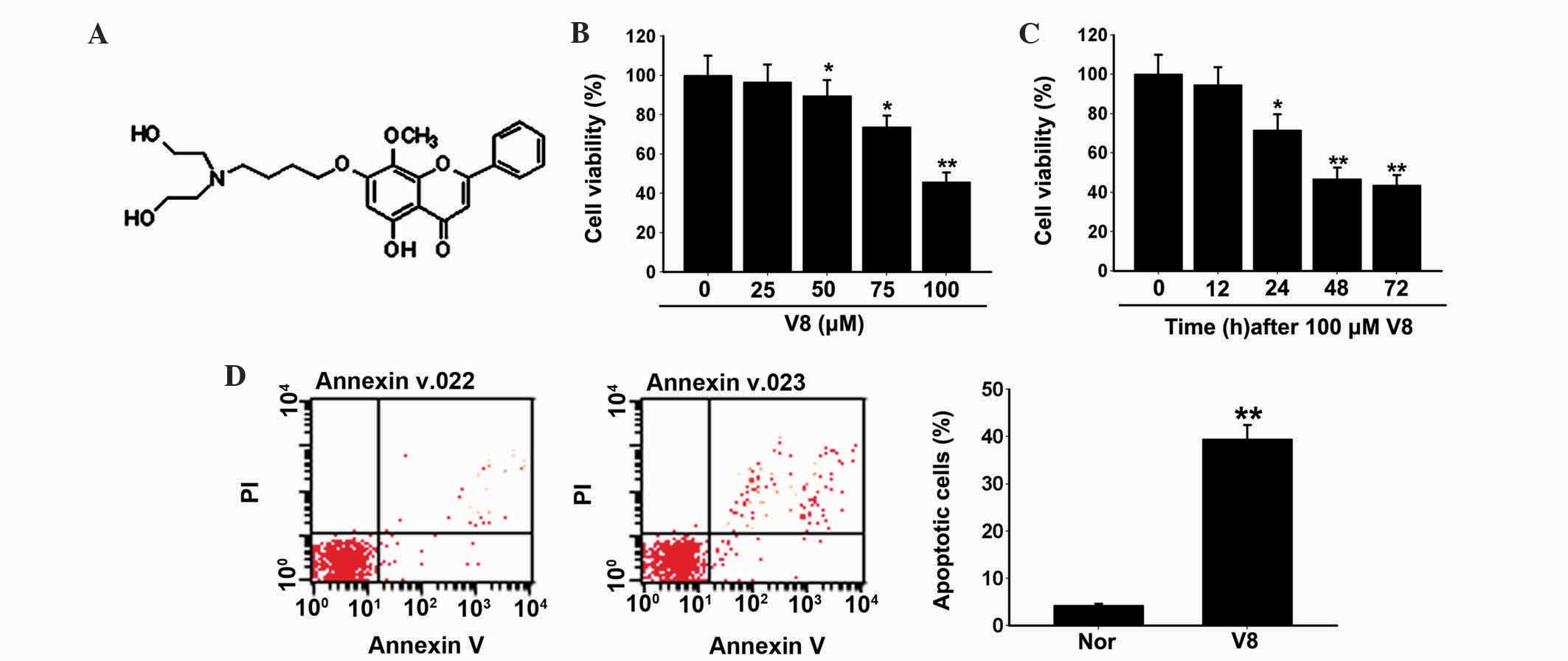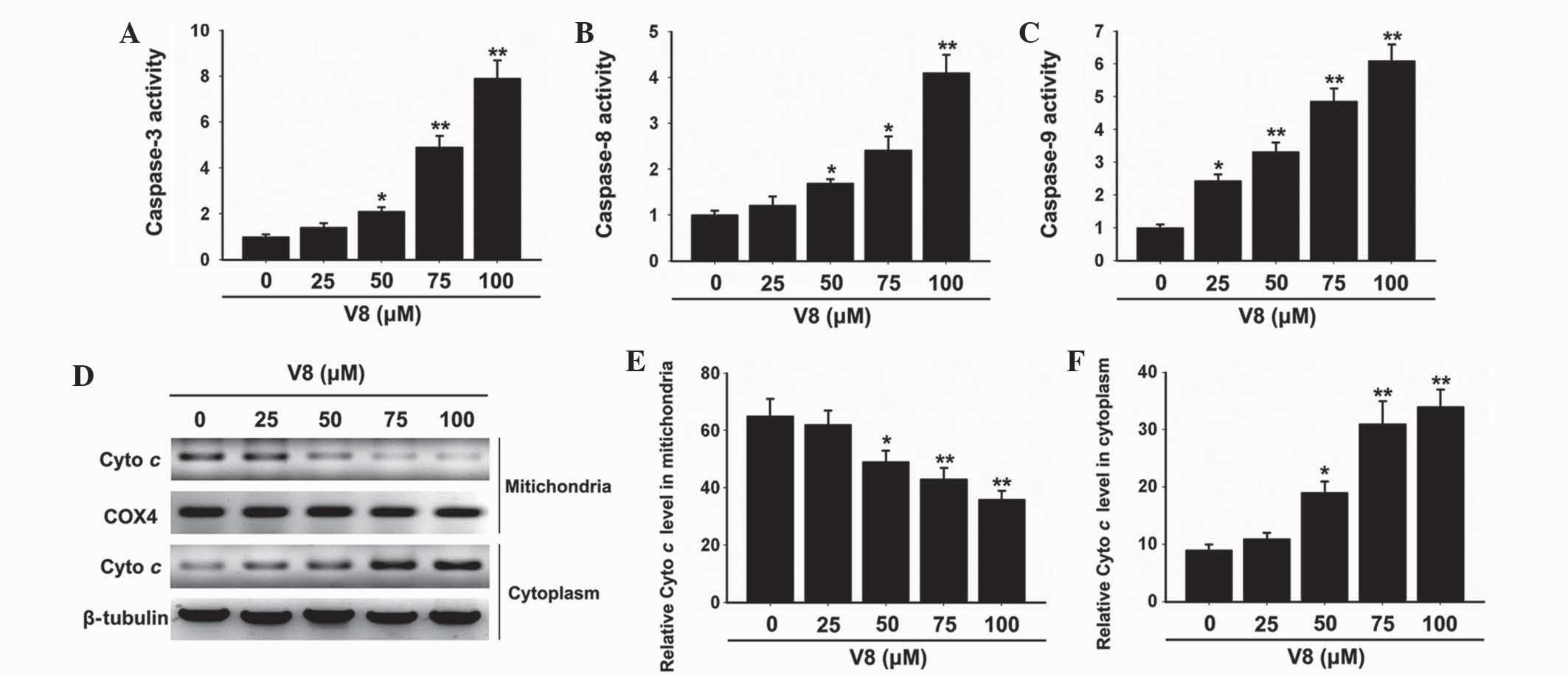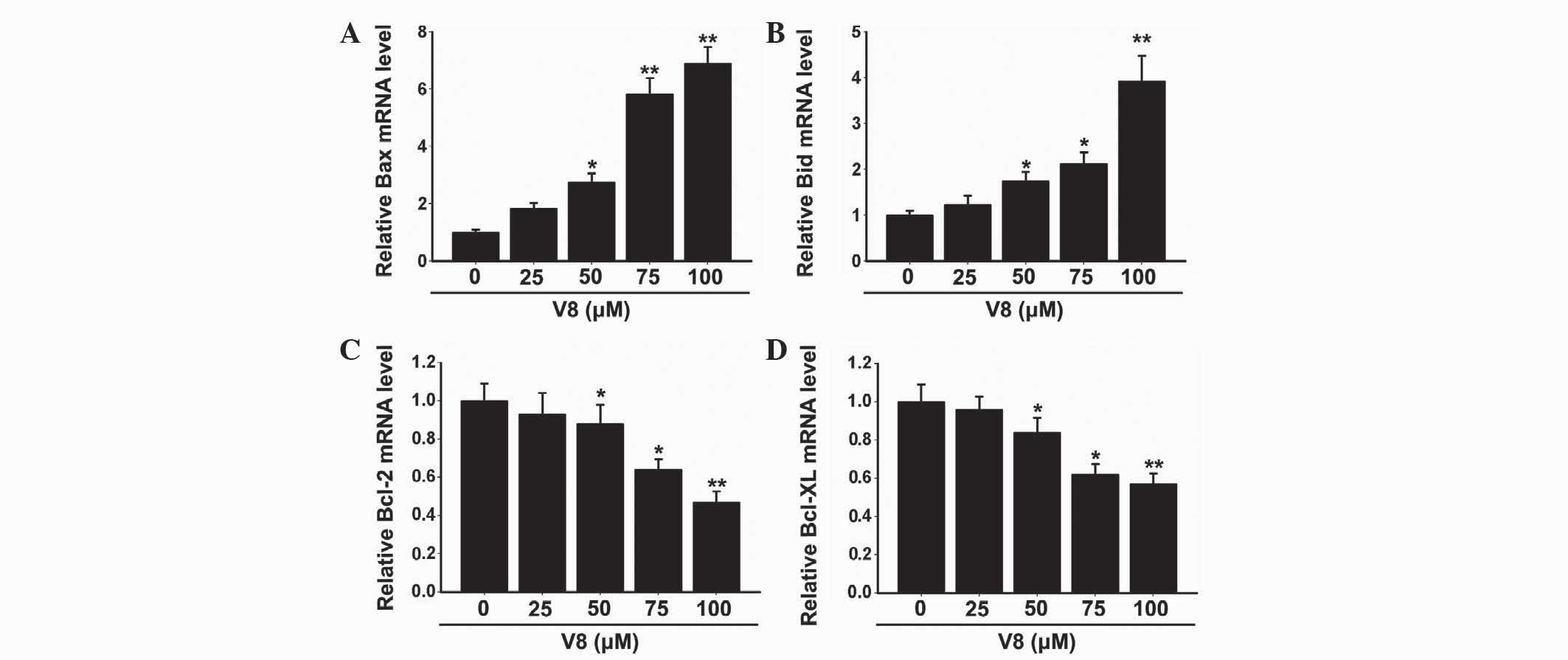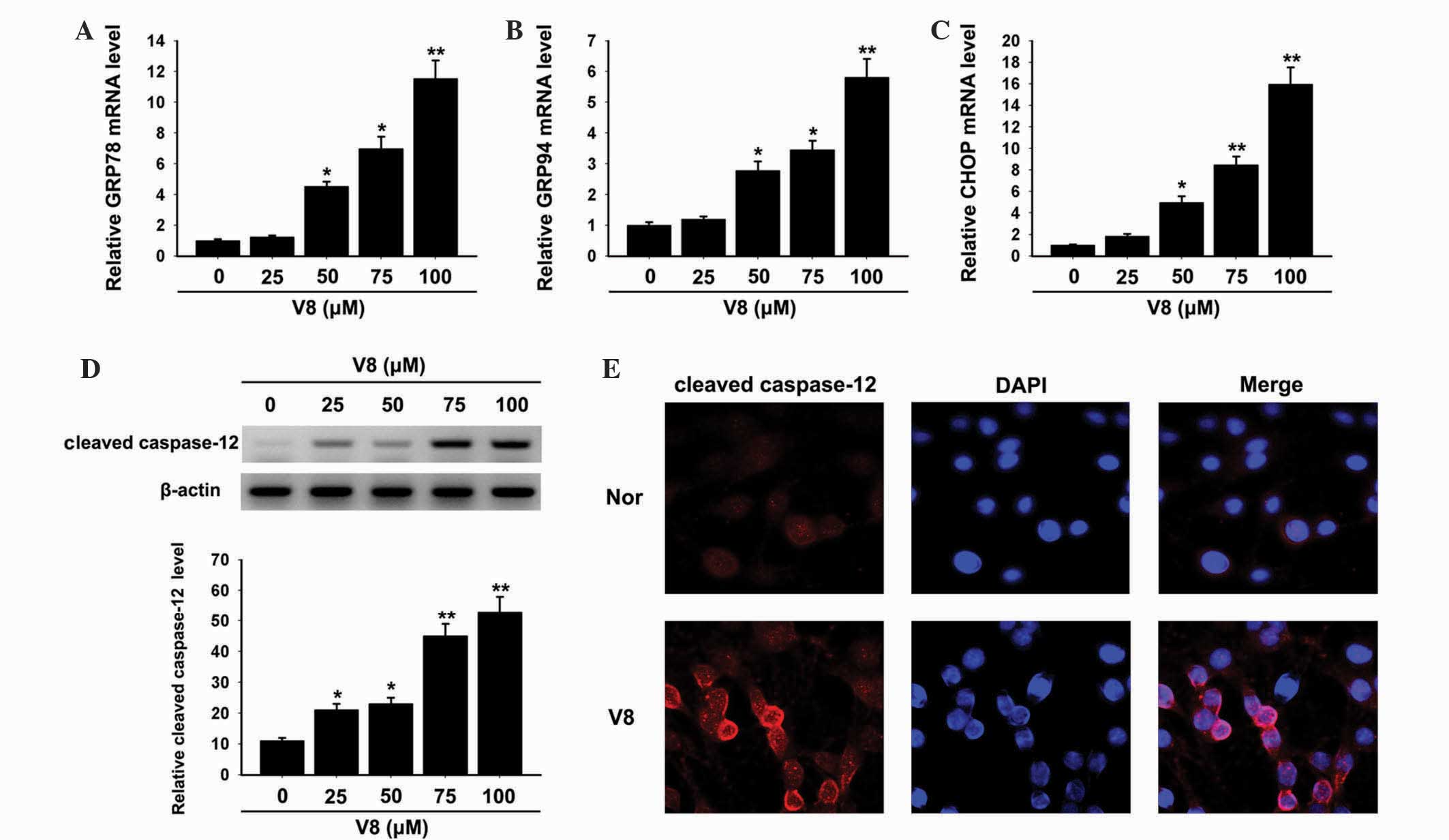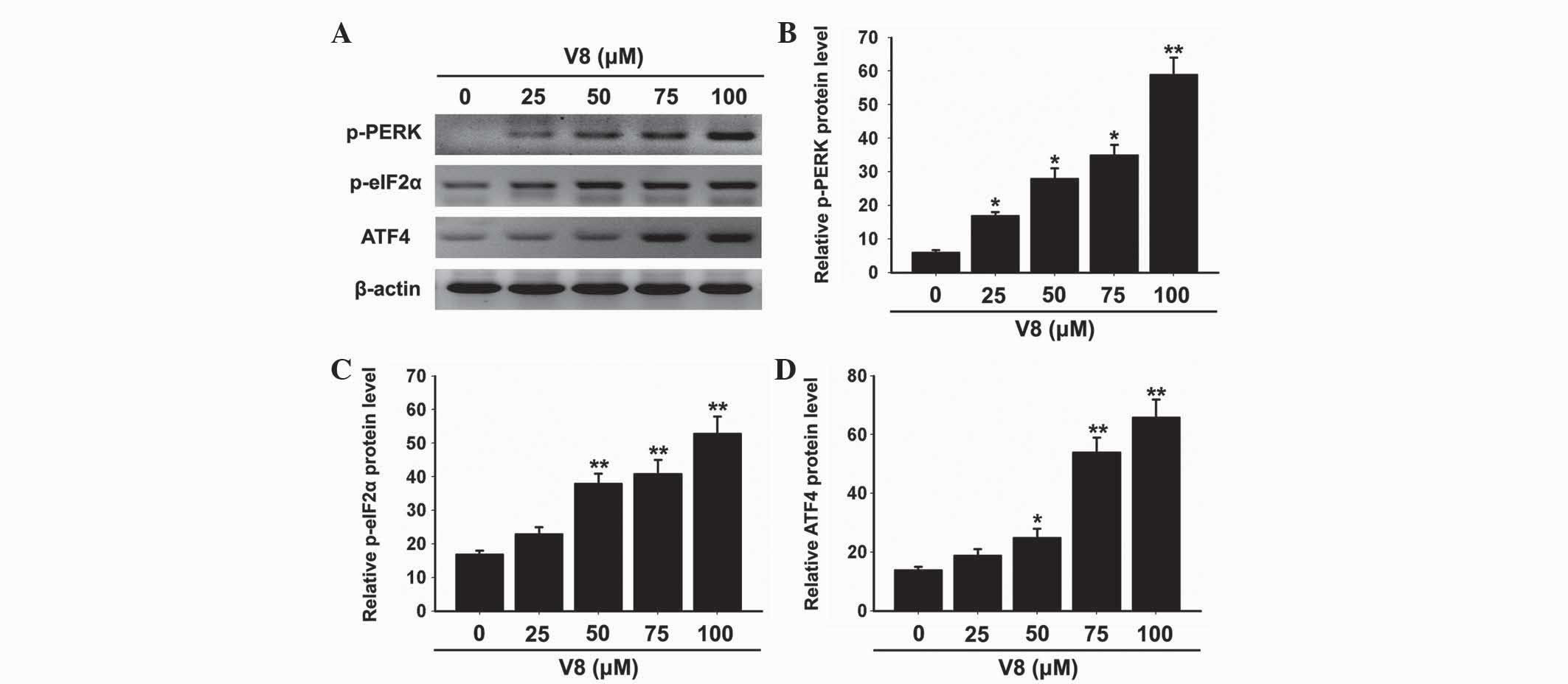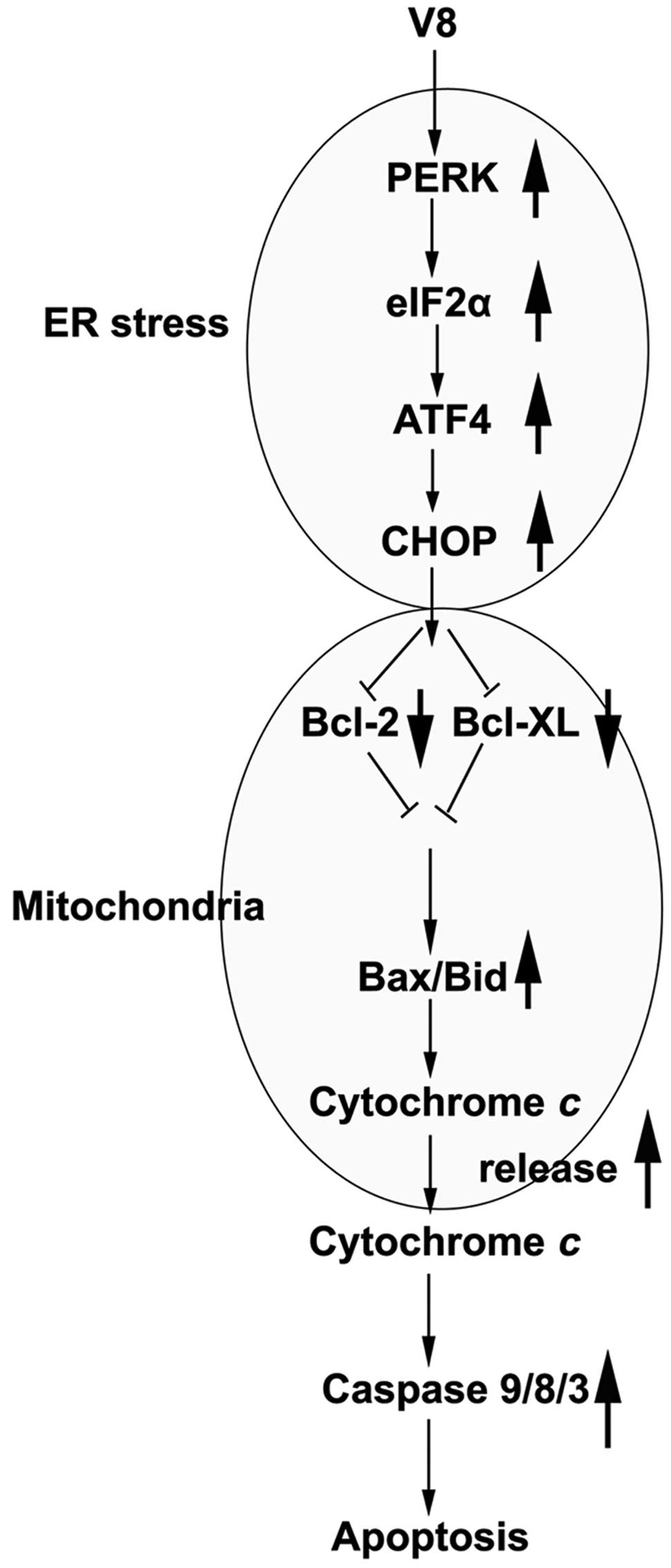|
1
|
Palumbo A and Anderson K: Multiple
myeloma. N Engl J Med. 364:1046–1060. 2011. View Article : Google Scholar : PubMed/NCBI
|
|
2
|
Sergentanis TN, Kastritis E, Terpos E,
Dimopoulos MA and Psaltopoulou T: Cytogenetics and survival of
multiple myeloma: Isolated and combined effects. Clin Lymphoma
Myeloma Leuk. 16:335–340. 2016. View Article : Google Scholar : PubMed/NCBI
|
|
3
|
Kumar SK, Rajkumar SV, Dispenzieri A, Lacy
MQ, Hayman SR, Buadi FK, Zeldenrust SR, Dingli D, Russell SJ, Lust
JA, et al: Improved survival in multiple myeloma and the impact of
novel therapies. Blood. 111:2516–2520. 2008. View Article : Google Scholar : PubMed/NCBI
|
|
4
|
Colson K: Treatment-related symptom
management in patients with multiple myeloma: A review. Support
Care Cancer. 23:1431–1445. 2015. View Article : Google Scholar : PubMed/NCBI
|
|
5
|
Aslan E, Guler C and Adem S: In vitro
effects of some flavonoids and phenolic acids on human pyruvate
kinase isoenzyme M2. J Enzyme Inhib Med Chem. 31:314–317. 2016.
View Article : Google Scholar : PubMed/NCBI
|
|
6
|
Khan R, Saif AQ, Quradha MM, Ali J, Rauf A
and Khan A: Antioxidant, antimicrobial and urease inhibiting
activities of methanolic extracts from Cyphostemma digitatum stem
and roots. Nat Prod Res. 30:486–488. 2016. View Article : Google Scholar : PubMed/NCBI
|
|
7
|
Pirouzpanah MB, Sabzichi M, Pirouzpanah S,
Chavoshi H and Samadi N: Silibilin-induces apoptosis in breast
cancer cells by modulating p53, p21, Bak and Bcl-xl Pathways. Asian
Pac J Cancer Prev. 16:2087–2092. 2015. View Article : Google Scholar : PubMed/NCBI
|
|
8
|
Wang Y, Han A, Chen E, Singh RK,
Chichester CO, Moore RG, Singh AP and Vorsa N: The cranberry
flavonoids PAC DP-9 and quercetin aglycone induce cytotoxicity and
cell cycle arrest and increase cisplatin sensitivity in ovarian
cancer cells. Int J Oncol. 46:1924–1934. 2015.PubMed/NCBI
|
|
9
|
Hung JY, Chang WA, Tsai YM, Hsu YL, Chiang
HH, Chou SH, Huang MS and Kuo PL: Tricetin, a dietary flavonoid,
suppresses benzo(a)pyrene-induced human non-small cell lung cancer
bone metastasis. Int J Oncol. 46:1985–1993. 2015.PubMed/NCBI
|
|
10
|
Ge W, Yin Q and Xian H: Wogonin induced
mitochondrial dysfunction and endoplasmic reticulum stress in human
malignant neuroblastoma cells via IRE1α-dependent pathway. J Mol
Neurosci. 56:652–662. 2015. View Article : Google Scholar : PubMed/NCBI
|
|
11
|
Falank C, Fairfield H and Reagan MR:
Signaling interplay between bone marrow adipose tissue and multiple
myeloma cells. Front Endocrinol (Lausanne). 7:672016.PubMed/NCBI
|
|
12
|
Rengarajan T and Yaacob NS: The flavonoid
fisetin as an anticancer agent targeting the growth signaling
pathways. Eur J Pharmacol. Jul 1–2016.(Epub ahead of print).
View Article : Google Scholar : PubMed/NCBI
|
|
13
|
Zhang Y, Zhao L, Li X, Wang Y, Yao J, Wang
H, Li F, Li Z and Guo Q: V8, a newly synthetic flavonoid, induces
apoptosis through ROS-mediated ER stress pathway in hepatocellular
carcinoma. Arch Toxicol. 88:97–107. 2014. View Article : Google Scholar : PubMed/NCBI
|
|
14
|
He A, Ji R, Shao J, He C, Jin M and Xu Y:
TLR4-MyD88-TRAF6-TAK1 complex-mediated NF-kappaB activation
contribute to the anti-inflammatory effect of V8 in LPS-induced
human cervical cancer SiHa cells. Inflammation. 39:172–181. 2016.
View Article : Google Scholar : PubMed/NCBI
|
|
15
|
Liu J, Gratz J, Amour C, Nshama R, Walongo
T, Maro A, Mduma E, Platts-Mills J, Boisen N, Nataro J, et al:
Optimization of quantitative PCR methods for enteropathogen
detection. PLoS One. 11:e01581992016. View Article : Google Scholar : PubMed/NCBI
|
|
16
|
Bhola PD and Letai A: Mitochondria -
Judges and executioners of cell death sentences. Molecular cell.
61:695–704. 2016. View Article : Google Scholar : PubMed/NCBI
|
|
17
|
Bittremieux M, Parys JB, Pinton P and
Bultynck G: ER functions of oncogenes and tumor suppressors:
Modulators of intracellular Ca(2+) signaling. Biochim Biophys Acta.
1863:1364–1378. 2016. View Article : Google Scholar : PubMed/NCBI
|
|
18
|
Lagace TA and Ridgway ND: The role of
phospholipids in the biological activity and structure of the
endoplasmic reticulum. Biochim Biophys Acta. 1833:2499–2510. 2013.
View Article : Google Scholar : PubMed/NCBI
|
|
19
|
Li-Weber M: New therapeutic aspects of
flavones: The anticancer properties of Scutellaria and its main
active constituents Wogonin, Baicalein and Baicalin. Cancer Treat
Rev. 35:57–68. 2009. View Article : Google Scholar : PubMed/NCBI
|
|
20
|
Volgyi K, Juhasz G, Kovacs Z and Penke B:
Dysfunction of endoplasmic reticulum (ER) and mitochondria (MT) in
Alzheimer's disease: The role of the ER-MT cross-talk. Curr
Alzheimer Res. 12:655–672. 2015. View Article : Google Scholar : PubMed/NCBI
|
|
21
|
Lall RK, Adhami VM and Mukhtar H: Dietary
flavonoid fisetin for cancer prevention and treatment. Mol Nutr
Food Res. 60:1396–1405. 2016. View Article : Google Scholar : PubMed/NCBI
|
|
22
|
Devi KP, Rajavel T, Habtemariam S, Nabavi
SF and Nabavi SM: Molecular mechanisms underlying anticancer
effects of myricetin. Life Sci. 142:19–25. 2015. View Article : Google Scholar : PubMed/NCBI
|
|
23
|
Kelloff GJ, Crowell JA, Steele VE, Lubet
RA, Malone WA, Boone CW, Kopelovich L, Hawk ET, Lieberman R,
Lawrence JA, et al: Progress in cancer chemoprevention: Development
of diet-derived chemopreventive agents. J Nutr. 130(Suppl 2S):
S467–S471. 2000.
|
|
24
|
Kurokawa M and Kornbluth S: Caspases and
kinases in a death grip. Cell. 138:838–854. 2009. View Article : Google Scholar : PubMed/NCBI
|
|
25
|
Suen DF, Norris KL and Youle RJ:
Mitochondrial dynamics and apoptosis. Genes Dev. 22:1577–1590.
2008. View Article : Google Scholar : PubMed/NCBI
|
|
26
|
Martinou JC and Youle RJ: Mitochondria in
apoptosis: Bcl-2 family members and mitochondrial dynamics. Dev
Cell. 21:92–101. 2011. View Article : Google Scholar : PubMed/NCBI
|
|
27
|
Moorwood C and Barton ER: Caspase-12
ablation preserves muscle function in the mdx mouse. Hum Mol Genet.
23:5325–5341. 2014. View Article : Google Scholar : PubMed/NCBI
|
|
28
|
Liu H, Wang Z and Nowicki MJ: Caspase-12
mediates carbon tetrachloride-induced hepatocyte apoptosis in mice.
World J Gastroenterol. 20:18189–18198. 2014. View Article : Google Scholar : PubMed/NCBI
|
|
29
|
Nakagawa T, Zhu H, Morishima N, Li E, Xu
J, Yankner BA and Yuan J: Caspase-12 mediates
endoplasmic-reticulum-specific apoptosis and cytotoxicity by
amyloid-beta. Nature. 403:98–103. 2000. View Article : Google Scholar : PubMed/NCBI
|
|
30
|
Sun Y, Zhang T, Li L and Wang J: Induction
of apoptosis by hypertension via endoplasmic reticulum stress.
Kidney Blood Press Res. 40:41–51. 2015. View Article : Google Scholar : PubMed/NCBI
|
|
31
|
Zhang YS, Shen Q and Li J: Traditional
Chinese medicine targeting apoptotic mechanisms for esophageal
cancer therapy. Acta Pharmacol Sin. 37:295–302. 2016. View Article : Google Scholar : PubMed/NCBI
|
|
32
|
Jiang Q, Li F, Shi K, Wu P, An J, Yang Y
and Xu C: Involvement of p38 in signal switching from autophagy to
apoptosis via the PERK/eIF2α/ATF4 axis in selenite-treated NB4
cells. Cell Death Dis. 5:e12702014. View Article : Google Scholar : PubMed/NCBI
|
|
33
|
Rouschop KM, van den Beucken T, Dubois L,
Niessen H, Bussink J, Savelkouls K, Keulers T, Mujcic H, Landuyt W,
Voncken JW, et al: The unfolded protein response protects human
tumor cells during hypoxia through regulation of the autophagy
genes MAP1LC3B and ATG5. J Clin Invest. 120:127–141. 2010.
View Article : Google Scholar : PubMed/NCBI
|















